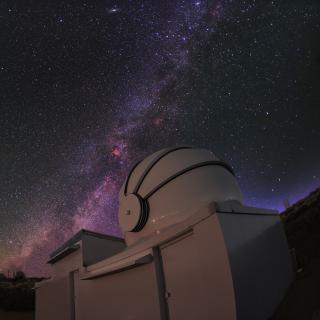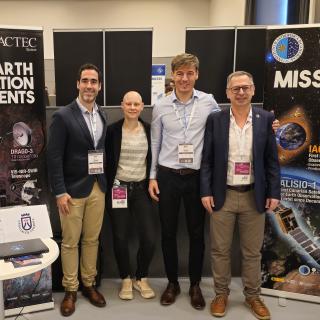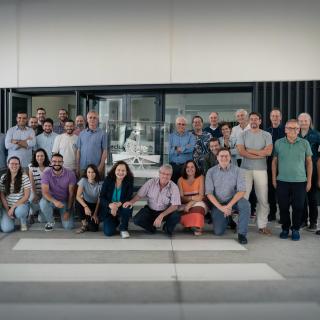It may interest you
-
 The third telescope of the Two-metre Twin Telescope (TTT3) situated in the Teide Observatory of the Instituto de Astrofísica de Canarias (IAC) has seen its “first light”. This robotic 2 meter telescope, managed by the Canary company Light Bridges, is one of the largest of its kind in the world.Advertised on
The third telescope of the Two-metre Twin Telescope (TTT3) situated in the Teide Observatory of the Instituto de Astrofísica de Canarias (IAC) has seen its “first light”. This robotic 2 meter telescope, managed by the Canary company Light Bridges, is one of the largest of its kind in the world.Advertised on -
 El equipo de IACTEC-Espacio , la división del Instituto de Astrofísica de Canarias (IAC) dedicada al desarrollo de tecnología espacial, participa esta semana como expositor en el Small Satellites & Services International Forum (SSSIF) 2025, celebrado en Málaga, consolidando su posición como referente en el sector espacial español. El evento, clave para la industria de pequeños satélites, está sirviendo de plataforma para presentar proyectos innovadores y establecer colaboraciones estratégicas en especial sobre los proyectos DRAGO, los instrumentos canarios con capacidad de detectar imágenesAdvertised on
El equipo de IACTEC-Espacio , la división del Instituto de Astrofísica de Canarias (IAC) dedicada al desarrollo de tecnología espacial, participa esta semana como expositor en el Small Satellites & Services International Forum (SSSIF) 2025, celebrado en Málaga, consolidando su posición como referente en el sector espacial español. El evento, clave para la industria de pequeños satélites, está sirviendo de plataforma para presentar proyectos innovadores y establecer colaboraciones estratégicas en especial sobre los proyectos DRAGO, los instrumentos canarios con capacidad de detectar imágenesAdvertised on -
 The IACTEC headquarters has recently hosted the meeting between the engineering team behind the future European Solar Telescope and an international panel composed of some of the world's leading experts in the development of large telescopes and solar observation instrumentation. It is common for major scientific projects to undergo this type of scrutiny during their development as a way to independently verify their quality and viability. The evaluation process began over a month ago with the submission of all the design documentation to the reviewers. In this case, the evaluation focusedAdvertised on
The IACTEC headquarters has recently hosted the meeting between the engineering team behind the future European Solar Telescope and an international panel composed of some of the world's leading experts in the development of large telescopes and solar observation instrumentation. It is common for major scientific projects to undergo this type of scrutiny during their development as a way to independently verify their quality and viability. The evaluation process began over a month ago with the submission of all the design documentation to the reviewers. In this case, the evaluation focusedAdvertised on
